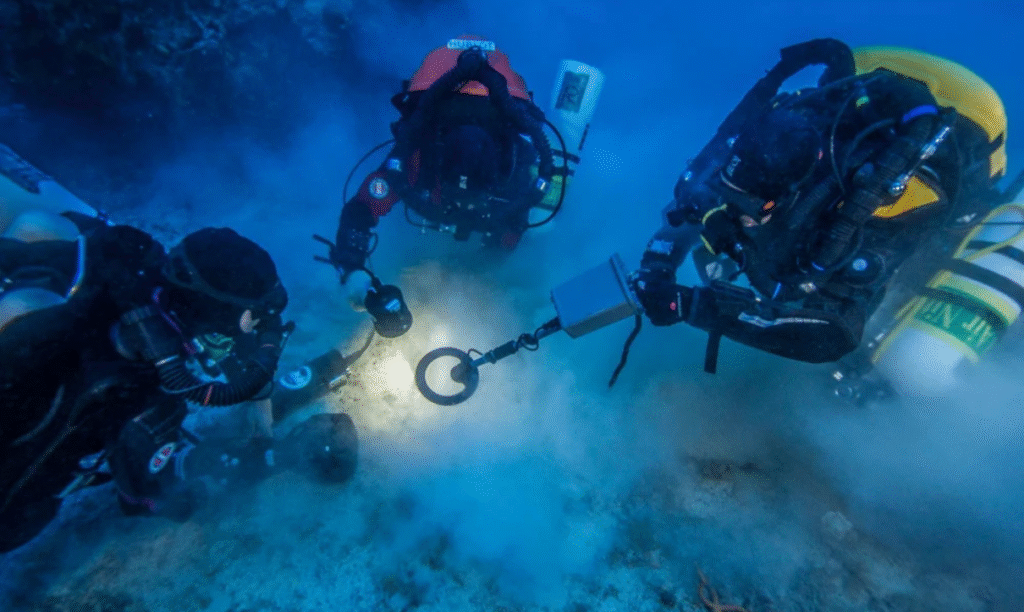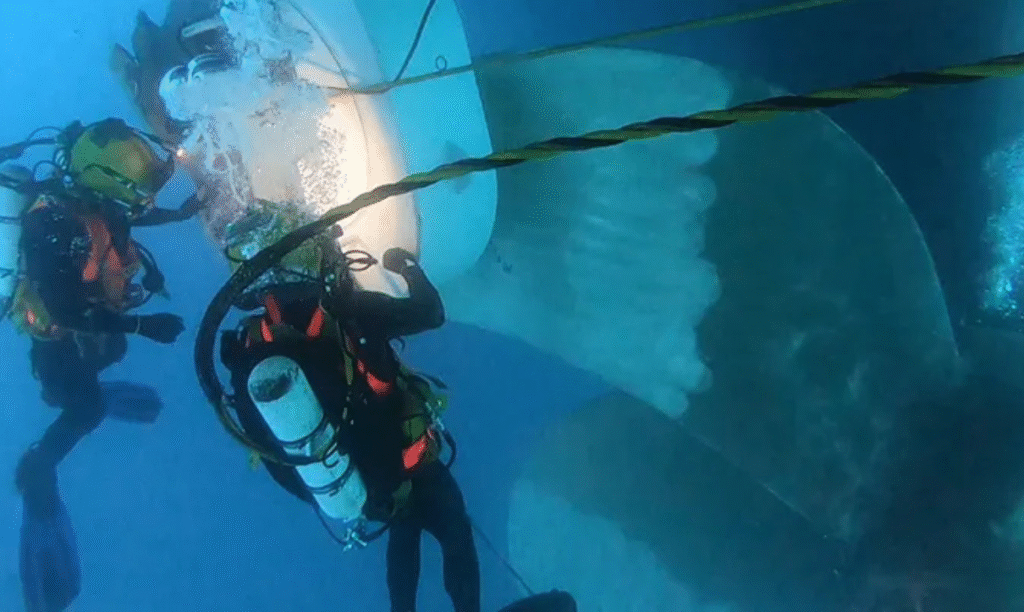In the dynamic world of shipping, few places require precision and compliance as strongly as Singapore. Serving as one of the busiest maritime hubs in the world, Singapore regulates nearly every vessel activity strictly. Among these, the Singapore MPA underwater cleaning rules stand out as a crucial, yet often misunderstood, set of environmental and operational standards.
Navigating these regulations isn’t always straightforward. They’re designed to protect marine ecosystems, maintain port efficiency, and ensure ships sail responsibly. But for ship operators like you, the challenge is ensuring compliance while minimizing delays and costs. The truth? The Singapore MPA underwater cleaning rules are not obstacles — they can be strategic tools to enhance safety, efficiency, and reputation if you understand how to work with them.
In this guide, we’ll explore:
- Why underwater cleaning matters in maritime operations
- The foundation of Singapore’s rules and how they work
- Compliance challenges and best practices
- Key economic, safety, and environmental benefits
- Future innovations in underwater cleaning
By the end, you’ll be ready to not only comply but also turn these regulations into tangible operational gains.
Why Underwater Cleaning Matters
Think of a ship’s hull like the wings of an airplane. For long-haul efficiency, those wings must remain smooth and free of obstruction. Similarly, fouled ship hulls — covered with barnacles, algae, and biofilms — behave like wings lined with sandpaper. The result? Increased drag, higher fuel consumption, and spiraling costs.
Here’s where the Singapore MPA underwater cleaning framework comes in. It acknowledges the real impact biofouling has:
- Raising shipping costs through excess fuel usage
- Increasing greenhouse gas (GHG) emissions
- Transferring invasive aquatic organisms between ecosystems
Singapore can’t afford ecosystem imbalances. Sitting at the crossroads of international trade, even one fouled vessel could spread invasive species like an uninvited guest at a global banquet. That’s why rules are tight. Also read about underwater hull cleaning in Colombia.

Understanding the Role of MPA
The Maritime and Port Authority of Singapore (MPA) oversees every aspect of port operations. Beyond logistics, MPA ensures Singapore remains a model for safe, clean, and environmentally sound maritime practices.
The Singapore MPA underwater cleaning rules are part of this broader mission, aligning with frameworks from the International Maritime Organization (IMO) and MARPOL Convention guidelines on vessel biofouling control.
In short, the MPA doesn’t just aim to regulate — it aims to lead by example, inspiring other ports to adopt equally sustainable practices.
⚓ Expert Underwater Hull Cleaning with Marine Super Cargo 🌊
— Marine Super Cargo (@Marinsupercargo) September 19, 2025
A clean hull means better performance, lower fuel use, and smoother voyages. Marine Super Cargo offers top Underwater Hull Cleaning to keep your vessel efficient, compliant, and ready for every operation. pic.twitter.com/sVKAUCytuS
Key Elements of Singapore’s Underwater Cleaning Rules
When examining the Singapore MPA underwater cleaning regulations closely, you’ll find a system built on accountability and technology.
Some cornerstone requirements include:
- Designated Cleaning Zones: Ship hull cleaning cannot happen just anywhere. Operators must respect approved boundaries.
- Pre-Approval Process: Providers and cleaning methods need validation before jobs are undertaken.
- Capture-and-Contain Requirement: Technologies must prevent fouling organisms, paint flakes, or waste from dispersing into the water.
- Mandatory Documentation: Surveys before and after cleaning, along with disposal records, are part of compliance.
- Alignment with Global Standards: Measures reflect IMO’s biofouling management guidelines and regional best practices.
Think of it as a formula: Clean hulls + Safe containment = Legal operations in Singapore.
Challenges for Operators
Of course, implementing the Singapore MPA underwater cleaning rules isn’t always simple. Operators must manage:
- Added Costs: Approvals and certified providers often raise expenses.
- Schedule Impact: Limited zones and pre-approvals can delay port rotation.
- Tech Investment: Traditional brushes or divers may not meet standards.
- Paperwork Burden: Documentation loads sometimes rival onboard cargo in weight.
But here’s the counterweight: short-term hassle prevents long-term headaches. Non-compliance leads to costly fines, potential detentions, and reputational damage. Also read about underwater hull cleaning in Hsinking.
Best Practices for Compliance
To navigate Singapore MPA underwater cleaning standards successfully, adopt these proven approaches:
- Eco-Friendly Coatings: Use antifouling paints (biocide-free where possible) to reduce fouling frequency.
- Certified Service Providers: Always contract MPA-listed firms that understand containment protocols.
- Smart Scheduling: Link cleaning with port arrivals and planned maintenance to avoid downtime.
- Technology Integration: Consider robotics or ROVs (remotely operated vehicles) that meet capture-and-contain requirements.
- Transparent Records: Keep your logs pristine — inspections often rely on proper paperwork.
This isn’t just about rule-following. It’s about ensuring your vessels are efficient, competitive, and environmentally responsible.
Benefits of Compliance
Adhering to Singapore MPA underwater cleaning requirements brings tangible gains:
- Fuel Efficiency: Streamlined hulls translate to significant savings — often in the range of 10–30%.
- Reduced Emissions: A global push for greener shipping (led by IMO’s decarbonization targets) makes this a reputational bonus too.
- Operational Predictability: Compliant operations are less likely to face unexpected penalties or port detentions.
- Extended Hull Protection: Cleaning within regulated frameworks protects hull coatings, reducing long-term maintenance needs.
Think of compliance not as an invoice, but as an investment with guaranteed ROI.
Future of Underwater Cleaning
Tomorrow’s Singapore MPA underwater cleaning will evolve alongside technology and global partnerships. Expect:
- AI Monitoring Systems: Real-time detection of fouling through onboard sensors.
- Autonomous Underwater Cleaning Robots: Providing on-the-go cleaning during voyages.
- International Alignment: Efforts by IMO and IAPH to reduce regulatory fragmentation.
- Eco-Incentives: Vessels engaging in proactive cleaning may enjoy lower port fees in the future.
The future is less about reactive cleaning and more about predictive, tech-powered maintenance.

Strategic Takeaway
The Singapore MPA underwater cleaning rules should not be viewed as storm clouds but as guiding stars. By adopting them early, operators not only stay compliant but also position themselves as leaders in eco-efficient operations.
Compliance equals reputation, fuel savings, and long-term competitiveness.
Conclusion
The Singapore MPA underwater cleaning regulations reshape how fleets operate in one of the world’s busiest ports. For ship owners, managers, and operators, the path forward is clear:
- Compliance safeguards ecosystems while securing operational efficiency.
- Eco-friendly coatings and certified providers reduce long-term costs.
- Embracing new technologies prepares operations for future regulations.
Turn regulatory obligations into a competitive edge. For practical, eco-aligned solutions that keep you ahead, visit CleanShip.co and future-proof your fleet today.
FAQs:
Q1. What is the purpose of the Singapore MPA’s underwater cleaning rules?
They ensure hull cleaning is conducted safely, in specific zones, and with approved technologies to prevent pollution and invasive species spread.
Q2. How does MPA compliance affect costs for operators?
While upfront costs may rise with certified providers, fuel efficiency gains and reduced penalties balance expenses, often saving money long-term.
Q3. Can non-compliance delay vessel operations?
Yes, violations can lead to fines, vessel detention in port, or reputational damage that hurts the operator’s credibility.
Q4. What technologies support underwater cleaning compliance?
Robotics, capture-and-filter systems, and eco-friendly hull coatings are commonly recognized by maritime authorities like IMO and MPA.
Q5. What trends define the future of underwater cleaning?
AI sensors, autonomous cleaning robots, and harmonized global rules will shape future eco-friendly and compliant hull-cleaning operations.


